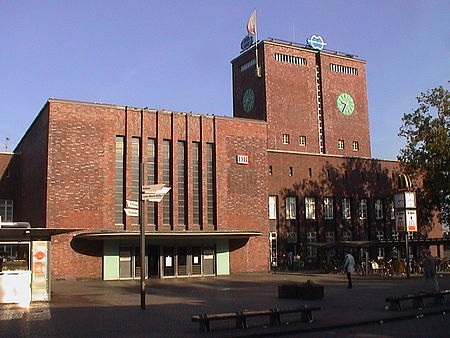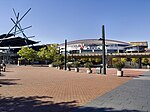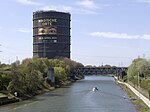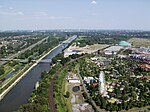Oberhausen Hauptbahnhof
1847 establishments in PrussiaBuildings and structures in OberhausenRailway stations in Germany opened in 1847Railway stations in North Rhine-WestphaliaRhine-Ruhr S-Bahn stations ... and 2 more
S2 (Rhine-Ruhr S-Bahn)S3 (Rhine-Ruhr S-Bahn)

Oberhausen Hauptbahnhof is a railway station in Oberhausen, North Rhine-Westphalia, Germany. The station was opened in 1847 and is located on the Duisburg–Dortmund railway, Arnhem-Oberhausen railway, Oberhausen–Duisburg-Ruhrort railway and Oberhausen-Mülheim-Styrum railway and is served by ICE, IC, RE and RB services operated by Deutsche Bahn, Abellio Deutschland, NordWestBahn and Eurobahn.
Excerpt from the Wikipedia article Oberhausen Hauptbahnhof (License: CC BY-SA 3.0, Authors, Images).Oberhausen Hauptbahnhof
Willy-Brandt-Platz, Oberhausen
Geographical coordinates (GPS) Address Nearby Places Show on map
Geographical coordinates (GPS)
| Latitude | Longitude |
|---|---|
| N 51.474166666667 ° | E 6.8536111111111 ° |
Address
Willy-Brandt-Platz 1
46045 Oberhausen (Alt-Oberhausen)
North Rhine-Westphalia, Germany
Open on Google Maps











